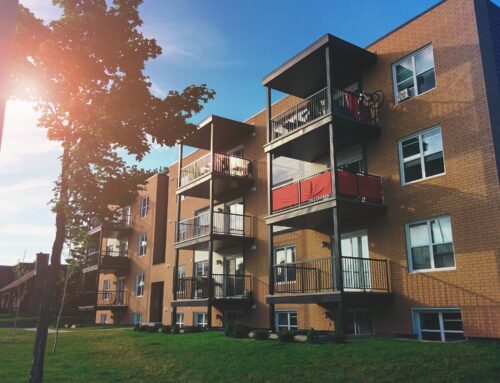Provincial Nominee Programs (PNPs) include some of the most popular paths to Canadian Immigration. Every province and territory, except for Nunavut and Quebec, offers its own distinct Provincial Nominee Programs to attract certain immigrants who are most desirable for the economy and labour market of that region. Quebec has a different system for selecting its immigrants. (See below.)
The Immigration, Refugees and Citizenship Canada (IRCC) grants each province the authority to select its own candidates, who can then go on to become Permanent Residents of Canada. And depending on the specific needs of the region, each province will set their own criteria and requirements for entry. In addition to providing a path to permanent residence, these programs often help applicants to secure their temporary work permits while they wait for the residence process to be completed.
Most provinces have created several different immigration streams. These are in addition to the various federal immigration options. (See our article on Canadian Immigration Programs.) And each province has at least one stream that aligns with the federal Express Entry Program.
First, let’s look at how the PNPs work and clarify some immigration terminology. Then we will examine the specific options and requirements for each province and territory, one by one.
What are the advantages of Canada’s Provincial Nominee Programs?
When applying for Canadian Immigration, the sheer range of choices and programs can be overwhelming. Every potential immigrant has dozens of options to choose from. And applying through the right program can make all the difference. So how do you know if a PNP is the best choice for you?
A Provincial Nominee Program could be a wise choice for the following reasons.
- Location specific: If you already know what part of Canada you want to move to, you may find that it’s easier to work directly with that province, rather than going through the federal bureaucracy. However, if you haven’t already decided on a city or region, one of those federal programs will allow you to keep your options open. (See our extensive article on Where to live when moving to Canada.)
- No job: Many of the federal immigration streams require proof of employment or a written job offer in order to qualify. That is NOT a requirement with most PNPs. But you will want to show that you have skills, education and work experience that are valuable in that province. You will also need to prove that you have the financial means to support yourself and your family.
- Specialization: Depending on your area of skills and level of experience, you will be able to narrow down your choices. Each province tailors its immigration programs to attract the sort of skills and professions most needed in their region. The prairie provinces, for example, have PNP streams for farmers and entrepreneurs. British Columbia and Ontario, by contrast, have a higher demand for healthcare providers and highly educated professionals.
- Express Entry: Many of the PNP streams align with the federal Express Entry program that can provide a fast path to permanent residence in Canada. (See below for details.)
How does the PNP application process work?
Once you have selected your preferred region in Canada, you will need to apply directly to that province. Each province has its own application process. Also, each province has its own requirements, based on what types of special skills and work experience are in greatest demand in that province or territory. (See the list of provinces and additional details below.)
Upon receiving your application, the province will weigh your skills and experience and assess how well you will be able to meet their economic or labour needs. If and when they approve your application, you will receive a nomination making you eligible for residency.
Your next step will be to apply for Permanent Residence. At this point there are two options. Usually the province or territory will advise you whether to apply through the Express Entry system or through the regular application process.
- Express Entry: Nominations issued under the Express Entry streams are known as enhanced nominations. If you go this route, you will need to create an Express Entry profile, if you haven’t already. This will enter you in the Express Entry pool. An enhanced nomination will add 600 points to an applicant’s CRS score, which basically guarantees admission. (See Express Entry details below.) You can submit your profile through the Canadian Immigration website.
- Regular process: If you are nominated under a non-Express Entry PNP stream, you will need to apply for permanent residence through the regular process. Visit the Canadian Immigration website to apply for permanent residence.
Applying for Permanent Residence in Canada
REQUIREMENTS
Along with your Nomination Certificate, you will be asked to provide certain additional documents.
- Financial means: You must prove that you are able to support yourself and your family financially.
- Police records: You might also have to provide a police certificate proving you have a clean criminal record.
- Medical Exam: A medical examination is usually standard.
- Biometrics: Before approving your permanent residence visa, the government will ask for biometrics. This new requirement (2018) includes fingerprints and a photograph. The fee for biometrics is $85 per person, or $170 for a family.
FEES
When you apply for Permanent Residence, through regular or Express Entry, you will have to pay the Right of Permanent Residence Fee (RPRF) which is CAN$490.
What is the Express Entry Program?
The IRCC uses the Express Entry system to manage permanent residence applications from skilled workers. In addition to the Provincial Nominee Program, Canadian Immigration offers three other programs for skilled workers. These are the Federal Skilled Worker Program, the Federal Skilled Trades Program, and Canadian Experience Class.
Some Provincial Nominee Programs are linked with the Express Entry program, while others are not. If you have received a nomination through a PNP, you can indicate that when you create your Express Entry profile. Or, you can create an Express Entry profile first, and then indicate the provinces and territories you are interested in.
The federal government intends to process the majority of Express Entry applications within six months, making it a much faster immigration alternative than anything previously available.
Express Entry pool and Comprehensive Ranking System
Foreigners can begin by creating an online profile, or they can apply through the PNP, as in the process described above. Once the IRCC accepts your application, you are entered into the Express Entry pool. Within the pool, the IRCC ranks each candidate according to a points-based system. One of the best ways to improve your score, or ranking, is with an enhanced nomination (from an Express Entry-aligned PNP). For this reason, it can be very advantageous to apply through a PNP from the beginning.
The Comprehensive Ranking System (CRS) looks at number of factors, including:
- age
- skills
- education
- language ability
- work experience
- other factors
Express Entry Draw and Invitations to Apply
Every few weeks, the Canadian government holds an Express Entry Draw. Based on the number of immigrants the country wants to admit, and the CRS scores within the Express Entry pool, Canada announces a cut-off score, and issues an Invitation to Apply for residency (ITA).
During the year 2018, Canada offered a total of 89,800 ITAs. In most cases, the cut-off score has been around 450 points. Candidates with enhanced nominations through a provincial program are awarded 600 points. This effectively guarantees them an ITA in the next draw.
How to know if you are eligible for a PNP?
As mentioned above, each province and territory creates its own requirements and criteria to qualify for one of its Provincial Nominee Programs. Basically, they will look at factors like age, skills, education, work experience and language ability. Most provinces have several different programs to attract a variety of skills and professions. Depending on the specific nominee program, requirements can vary greatly, with certain factors weighing more heavily than others.
A province by province overview of PNPs across Canada
Alberta
Alberta is famous for having some of the largest oil and natural gas reserves in the world. In fact, they are the second largest after Saudi Arabia’s. But petroleum related chemists, engineers and geologists are not the only jobs available in the province.
One of Alberta’s PNPs simply selects candidates who have already entered the Express Entry pool. You must be selected to qualify for this stream.
The Alberta Opportunity Stream (AOS) offers a path to permanent residence for foreigners already working in Alberta and graduates of any approved post-secondary institution within the province. Applicants must already have temporary residence status. There are also educational requirements. This is not an Express Entry stream.
Alberta’s Self-Employed Farmer Stream aims to attract farmers who plan to live in Alberta in order to purchase and manage a farming business. Candidates must demonstrate that they have sufficient farming experience and sufficient financial resources. This is not an Express Entry stream.
To learn more about Alberta Immigrant Nominee Programs (AINP), or to apply, visit their website.
British Columbia
Situated on Canada’s west coast and enjoying perhaps the country’s very best weather, Vancouver and British Columbia have become a very popular destination for immigrants. The province offers almost a dozen different immigration programs for skilled workers of all different fields.
A handful of programs are linked to the Express Entry program and provide an immigration path for skilled workers, health care professionals and students with varying levels of education and professional experience. Nurses and caregivers are in especially high demand.
Additionally, several similar programs exist that are not Express Entry-aligned.
For complete details, including specific work experience and education requirements for each program, please visit the PNP section of the Welcome BC website.
Manitoba
Of Manitoba’s several PNPs, including two new programs rolling out in 2019, only one works with the Express Entry program. This federal Express Entry-aligned stream is open to candidates with a high-demand occupation. They must also show the support of a close friend or relative who has resided in Manitoba for at least one year.
A somewhat underpopulated province, Manitoba’s in-demand occupation list identifies a vast number of professions. Included on the list are jobs in business, healthcare, government, arts, recreation, transportation, manufacturing and utilities.
A host of other immigration streams are available for foreign entrepreneurs and investors, as well as skilled workers who already have work experience in Manitoba or some other connection to the province.
The 9,000-person community of Morden, about an hour outside of Winnipeg, has spearheaded its own immigration initiative. The small town is seeking welders, carpenters, cooks and plumbers, between the age of 21 and 45, with at least one year of post-secondary education or training.
To learn more about Manitoba Immigrant Nominee Programs (MPNP), or to apply, visit their website.
New Brunswick
The New Brunswick Express Entry Program is currently accepting Expressions of Interest (EOIs) from individuals who have already entered the federal Express Entry pool. Candidates must also meet the standard requirements for language and education, and be currently living and working in New Brunswick with temporary residency.
Other programs are available to employees with support of their employers and to entrepreneurs who have graduated from a recognized academic institution in New Brunswick, and have started or acquired a business in the province.
To learn more about New Brunswick Provincial Nominee Programs (NBPNP), or to apply, visit their website.
Newfoundland and Labrador
Few people think of Newfoundland and Labrador (NL) as a hotspot of economic livelihood, on the rugged coast of easternmost Canada. But it is a place of breathtaking landscapes, glacial fjords and plenty of room for newcomers.
NL has an Express Entry Skilled Worker immigration stream for candidates who already have a job offer in the province. Those who can show strong ties to the region, including prior work experience with a valid work permit, will have the best chances for acceptance. Applicants should first sign up for the federal Express Entry pool before applying for the NLPNP.
The province also has plans to create an International Graduate and an International Entrepreneur stream to attract well-educated and economically motivated prospects who want to stay in the area and contribute to its growth and development.
For complete details about the Newfoundland and Labrador Provincial Nominee Programs (NLPNP), including how to apply, visit their website.
Northwest Territories
In the other far corner of Canada, the Northwest Territories Express Entry stream works in conjunction with the federal program to help address the labour shortage in that region. In order to be eligible, candidates should meet the same minimum requires for the Federal Skilled Worker, Federal Skilled Trades and Canadian Experience Class programs. Another requirement is to present a full-time, permanent job offer that demonstrates the ability to economically settle in the Northwest Territories. NT offers other skilled worker programs which also require job offers but do not align with the federal Express Entry program.
Also, the Northwest Territories Business Stream provides an opportunity for those with business expertise and sufficient capital to invest in the local economy. Once the business plan is approved and implemented, foreigners will be eligible to apply for permanent residence.
To learn more about the Northwest Territories Nominee Programs (NTNP), or to apply, visit their website.
Nova Scotia
This distant, maritime province has set up several immigration streams to help meet the labour shortages in the area. Nova Scotia Demand: Express Entry aims to attract high skilled workers from overseas. The program works in line with the federal Express Entry program, and candidates must have a valid job offer in the province in order to qualify.
A similar program, Nova Scotia Experience: Express Entry offers a path to permanent residence for foreign workers who already have at least one year of employment experience in the province. Candidates have two options. Either they can apply directly to the Nova Scotia Office of Immigration (NSOI), or they can first create an active profile with the IRCC, after which the NSOI may select them from the Express Entry pool.
Additional programs exist for semi-skilled and low-skilled workers, but they are not aligned with the federal Express Entry program.
The Nova Scotia Office of Immigration has two other programs for Entrepreneurs and International Graduate Entrepreneurs. These immigration streams apply to candidates who intend to start a business in the province, and to recent graduates of a post-secondary school in Nova Scotia who have already started a business.
For complete details about the Nova Scotia Immigration Nominee Programs (NSNP), including how to apply, visit their website.
Ontario
Canada’s most populous province, Ontario has a dozen different PNP streams to attract highly educated and highly skilled foreign workers of all types. Several of these programs are aligned with the federal Express Entry program and have very similar requirements to the Federal Skilled Worker, Federal Skilled Trades and Canadian Experience Class programs. Programs like this have helped to encourage immigration and fuel strong economic growth in the city of Toronto.
Additional immigration streams, not aligned with Express Entry, exist for Master’s Degree holders, PhDs, entrepreneurs and corporate staff. To make it easier for major international corporations to set up offices in Ontario, the Ontario Immigrant Nominee Program (OINP) Corporate Stream makes key staff members eligible for a provincial nomination certificate, allowing them to eventually become permanent residents of Canada.
In 2019, the Ontario government proposed some big changes and new immigration streams. Pending approval, there will be a new program for High-Tech Workers. And an expansion of the In-Demand Skills Stream would include truck drivers and personal support workers. Changes to the Entrepreneur Stream would also lower some investment requirements, making it more competitive will similar streams in other provinces.
For complete details, including eligibility requirements and application procedures, for all the various options available through the Ontario Immigrant Nominee Program, visit their website.
Prince Edward Island (PEI)
Canada’s smallest province, PEI offers a number of its own immigration programs. The PEI PNP Express Entry program favours those who possess the skills in highest demand at the time. Three different skilled worker type streams are available to candidates with valid job offers in the province. Another work permit stream is available to foreigners who want to invest in a local business and come to Canada on a work permit.
To learn more, check out the PEI immigration website.
Quebec
In French Canada, the province of Quebec has its own process for selecting immigrants. The immigration streams operate independently from the federal programs, including the Express Entry program.
Among these options are the Quebec Skilled Worker Program, the Quebec Experience Program (QEP) for Temporary Foreign Workers, the Quebec Experience Program (QEP) for International Students, an Entrepreneur Program, Self-Employed Worker Program, and an Investor Program.
For complete details, including eligibility requirements and application procedures, check out the Quebec immigration website.
Saskatchewan
Not unlike the other provinces, Saskatchewan has an Express Entry stream and several other options for skilled workers, students and entrepreneurs. There are programs for prospective immigrants with active job offers, as well as those who are coming without a job. Some of the highest demand jobs are for healthcare providers and truck drivers.
Saskatchewan also has a program for farmers and farm owners. The SINP Farm Owners and Operators Sub-Category aims to attract experienced farm workers and provide them and their families the opportunity to become permanent residents in Canada. In addition to proving their experience and expertise in farming, candidates must show sufficient financial resources to purchase a farm.
For complete details about the Saskatchewan Immigration Nominee Program (SINP), including how to apply, visit their website.
Yukon
Site of the 19th century Klondike Gold Rush, people are no longer flocking to Canada’s northwestern-most territory the way they once did. But the provincial government is doing everything it can, short of handing out gold nuggets, to make the prospect as attract as ever.
The Yukon Nominee Program (YNP) offers four different options that include immigration streams for Express Entry, Skilled Workers, Critical Impact Workers and Business Nominees.
For complete details about the Yukon Nominee Program (YNP), including how to apply, visit their website.
Further reading
ARIANNE Relocation has been helping students, families and professionals move to Canada for more than 20 years. Once the Canadian government approves your application and issues your visa, you still have a long road to getting settled in your new country. It’s our pleasure to help newcomers understand the local customs, housing markets, healthcare options, schooling systems and more. Our relocation products and services can help you integrate more quickly and comfortably, saving you time and money, and helping you to avoid the most common stumbling blocks.
To learn more about Canadian immigration programs and relocation services, please take a look at some of our other informative articles.
- Immigration Programs in Canada
- Finding an Immigration Consultant
- 5 Steps to Canadian Immigration and Relocation
- Canadian Relocation Services
- Where to live when moving to Canada
- Moving to Canada as an Entrepreneur or Skilled Worker
- Moving to Canada as a Freelancer
PHOTO CREDIT: Canadian Maple Leaves (Unsplash)







Leave A Comment